JOINT BASE SAN ANTONIO-LACKLAND, Texas — After 10 years of intense combat and regular deployments, many of the Air Force’s most skilled and elite troops often are “held together with duct tape and bailing wire,” said Maj. Sam Schindler, director of operations for the 350th Special Warfare Training Squadron.
But now, the Air Force is trying to change that with the help of cutting-edge technology, new thinking and an intense focus on injury prevention and rehab inspired by college sports medicine programs.
The 350th is tracking everything from trainees’ body fat, to what muscles they use when they work out, to their sleep cycles and moods, in order to lessen the wear and tear on their bodies. And if the new philosophy at the prep course works, the Air Force hopes it will instill good habits in these special warfare — until recently known as battlefield — airmen that will last throughout their entire careers.
“We’re trying to bring in as much technology as we can, and as many experts as we can, to get the best that we can out of the airmen coming to us,” Schindler said.
Air Education and Training Command said the techniques being pioneered at the Special Warfare Preparatory Course at Joint Base San Antonio-Lackland could be used to help refine training for other, non-special warfare airmen.
The Air Force is increasingly worried about the punishment taken on by special warfare airmen such as pararescuemen, tactical air control party members, and combat controllers.
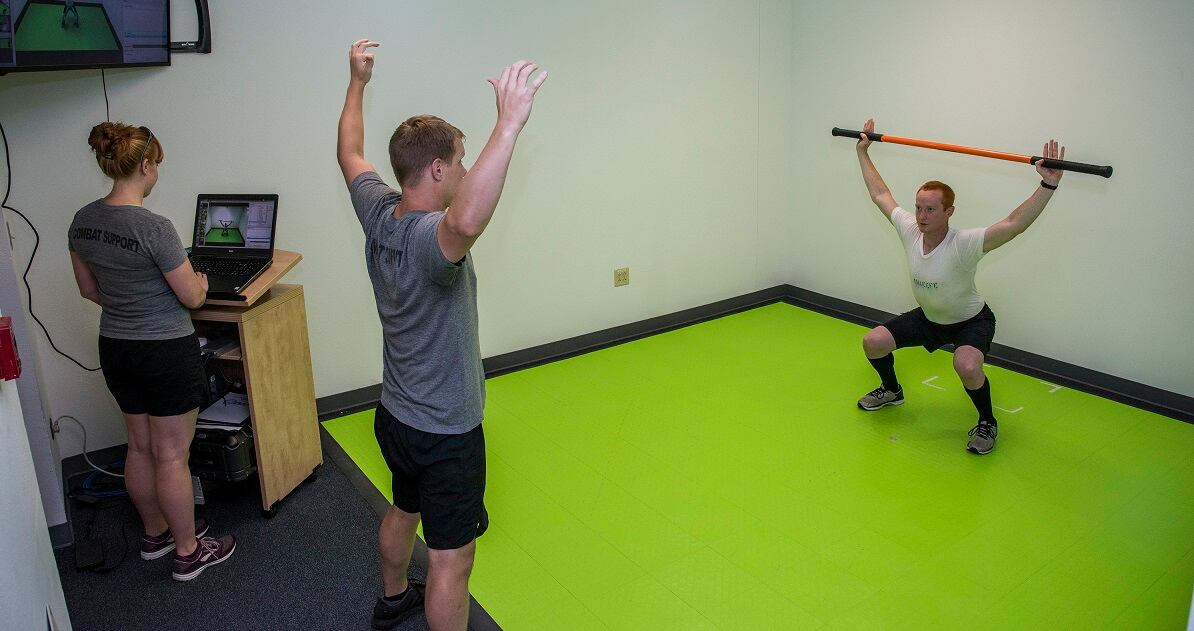
In a July memo — which outlined major changes to how the Air Force will organize, train and sustain its special warfare airmen and signed by Vice Chief of Staff Gen. Stephen Wilson — the Air Force raised concerns that many of those airmen end up “physically, mentally and psychologically broken due to their combat experience and service commitment.”
In October, the Air Force stood up a new Special Warfare Training Wing, with a Human Performance Support Group that aims “to find the most efficient and effective methods for improving human performance,” wing commander Col. James Hughes said in an Oct. 12 interview.
The physical toll taken on their bodies can be so bad, Schindler said, that when they retire and go to a Veterans Affairs center for medical attention, their doctors often immediately tell them “your back is jacked up, your knees are jacked up, your ankle’s jacked up, your shoulder’s jacked up.”
And that’s if they even make it through training without a serious injury that could delay — or even scuttle — their dreams of becoming a special warfare airman.
’A college sports medicine model’
The heart of the nine-week prep course’s effort to prevent or alleviate injuries is in its athletic training facility, a large room stocked with specialized exercise equipment, mats to stretch on, cryotherapy units and other rehab technology, tables for injured students to lay on for treatment — and most importantly, trainers with experience in college athletic programs.
RELATED
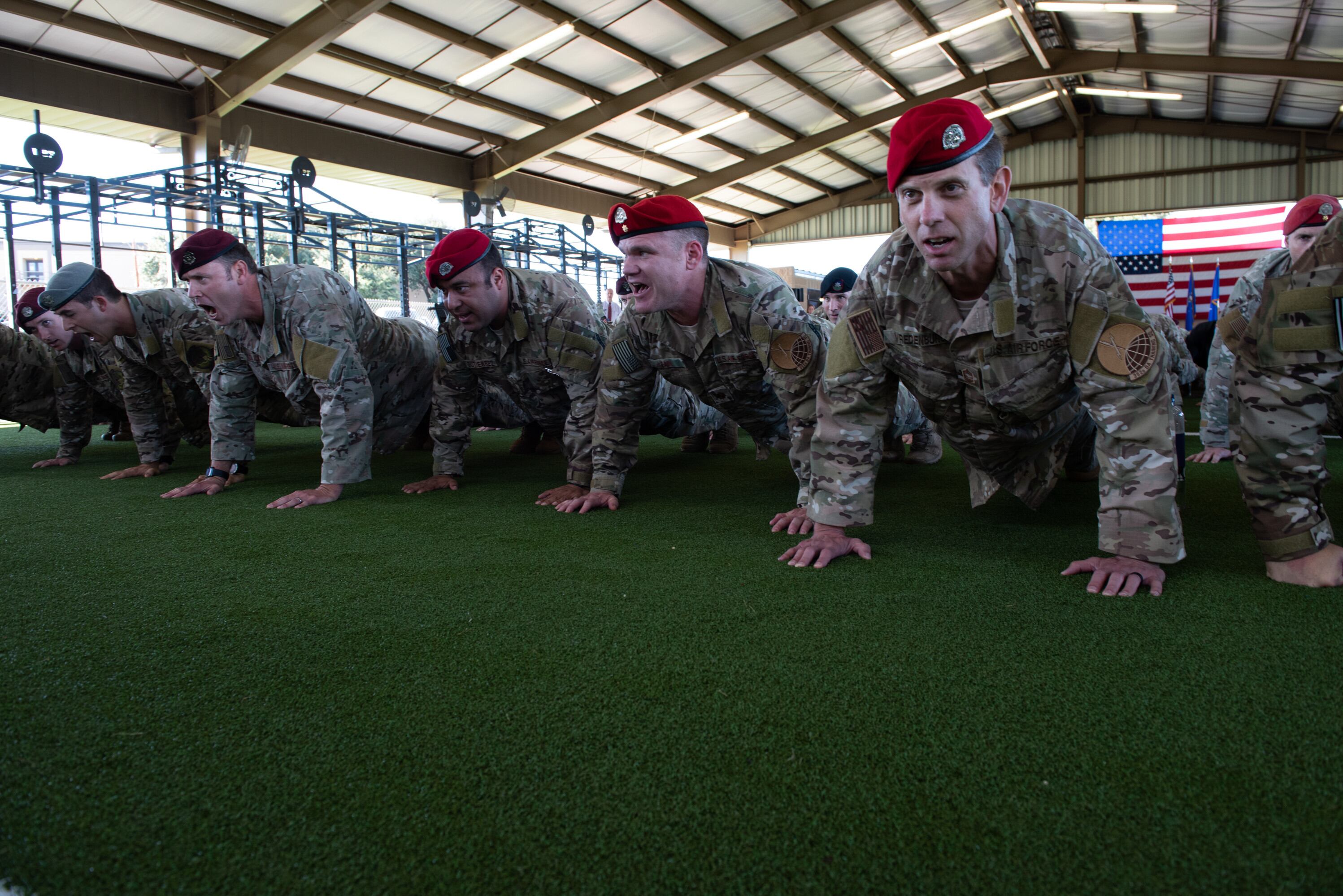
“We’re trying to model it off of a college sports medicine model, where we have athletic trainers on site, and we have other providers who are able to come by as needed — and they come by rather routinely,” said athletic trainer Laura Mertz, one of three at the prep course.
Since the training facility opened in February, trainees who feel like they may be coming down with an injury — leg injuries are most common — come in before they go out to train for “prehab,” or treatments to keep those problems from getting worse.
For example, the training bay has specialized anti-gravity treadmills called the AlterG, which allows an injured student to keep exercising without worsening ailments such as shin splints or knee injuries. A student pulls on a specialized pair of shorts, which zip into a giant pocket over the treadmill that inflates and lifts him up. This allows a student to run at a fraction of his normal body weight, so his injured leg is still getting worked out, but isn’t taking the full brunt of his weight.

The AlterG treadmill also has a camera trained on the runner’s legs, so the trainer can see if he’s favoring a leg, which could create an imbalance and lead to further injuries down the line. If a trainer spots such an imbalance, she can take more weight off and correct the student’s gait.
“A lot of times in the military the thinking is, you’re either healthy and training, or you’re hurt and not training,” Mertz said. “We’re trying to help them understand that it’s not black and white. There is that area where you can still be participating in some things while you’re still receiving care.”
Mertz and the other trainers said they used their own personal experiences at college athletic programs to set up the training, treatment and recovery program for battlefield airmen.
RELATED
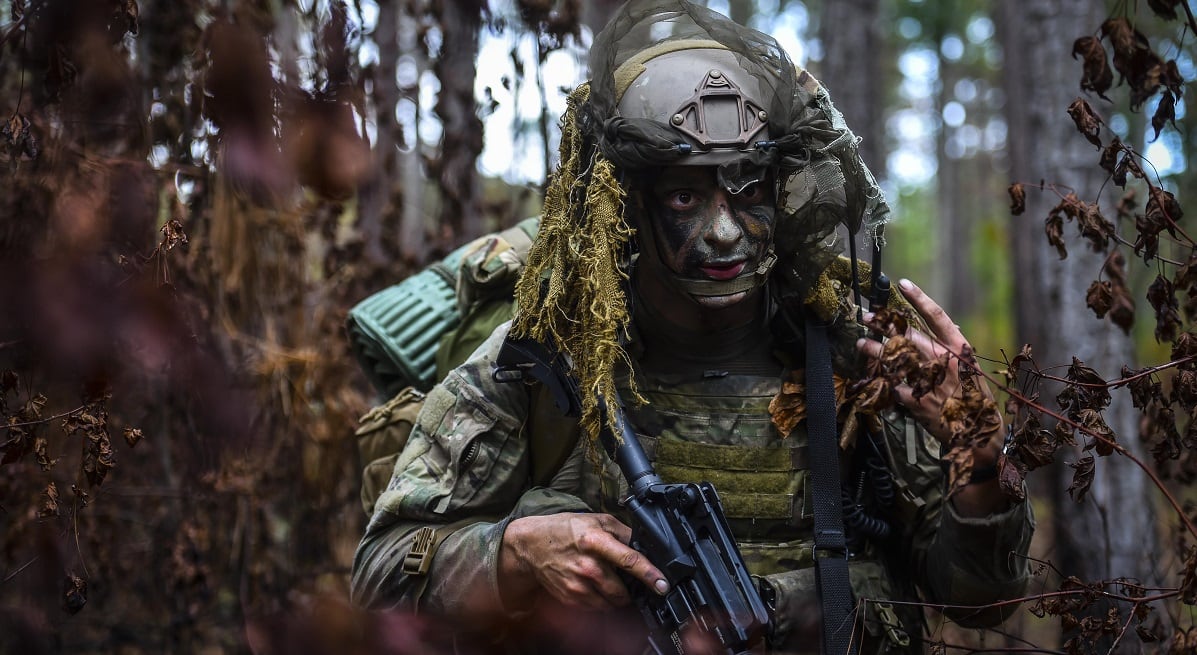
Early in the training process, the Air Force uses a motion capture system called DARI — which stands for Dynamic Athletic Research Institute, the company that created it — to scan all aspiring battlefield airmen, recording exactly how their bodies jump, flex and balance. During the DARI test, an airman stands on a greenscreen floor, surrounded by cameras that map a virtual skeleton on his body.
As the airman moves through a sequence of 19 squats, jumps, flexes, lunges and balances, the virtual skeleton records how his hips, knees, ankles, and other body parts move. This tells the trainers which muscles he’s using — or in some cases, not using, which if uncorrected, could lead to injuries down the line such as strained hamstrings.
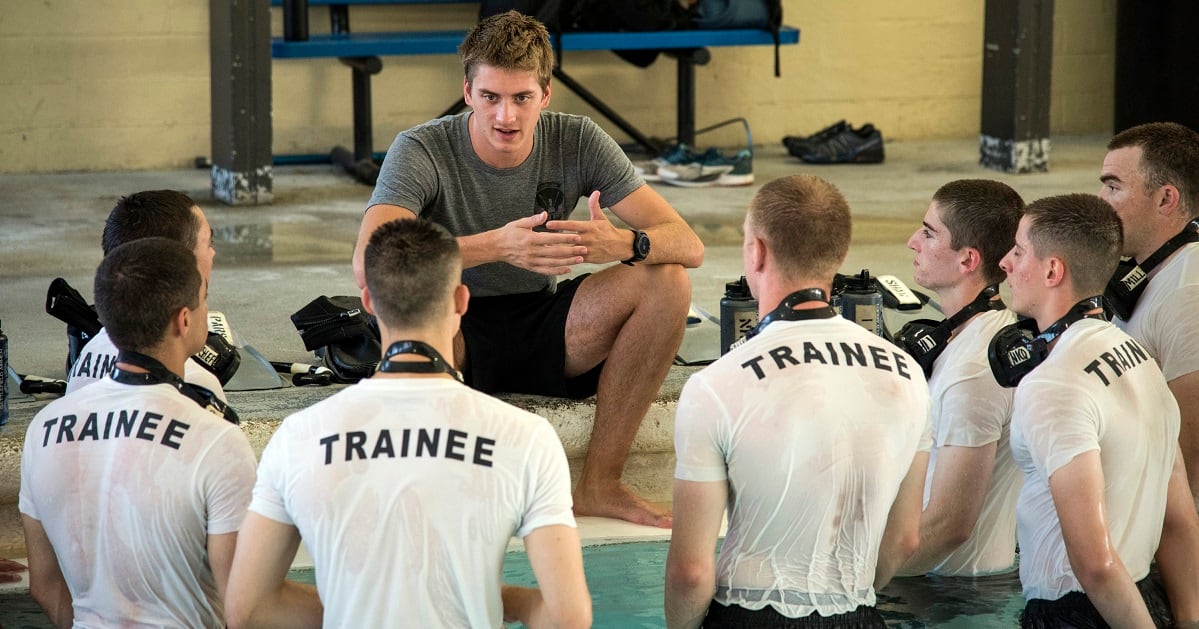
“If we could get you to fire the proper muscles, you would run faster, you would jump higher, you would lift heavier,” athletic trainer Rachel Matson said. “You would just be a better-functioning candidate all around.”
Schindler said this will give the Air Force a baseline for all future operators, recording exactly how their bodies move. And down the line, the Air Force hopes to push DARI systems out to units. That way, if a special warfare airman starts to feel like he’s breaking down after a decade or so, he can get a new scan. The unit would then be able to compare it to his old scan, find out where he developed a hidden injury on his last deployment, and then come up with a plan to get healthy again.
If a trainee’s DARI scan flags some problem areas, he is put into a corrective exercise program. The trainee puts on a specialized pair of training shorts that sends signals to an iPad, which show which muscles are firing during exercises by lighting them up from blue, to yellow, and finally to dark red when they’re fully engaged.
Biometric feedback
Tracking how well aspiring special warfare trainees are doing goes a lot deeper than their muscles. Pat Wilson, the program manager for the 350th’s innovation cell, displayed a series of three sensors used to track their heart rates, sleep patterns and other data while they work out.
Each morning, right after trainees wake up, they pee in a cup and use a device called a gravity pen to measure how hydrated they are. They then lay down and have a four-minute echocardiogram taken by an Omegawave sensor strapped to their chest, which is typically used for sports training.
And when they go out to train, they strap a puck called a Zephyr onto their chest, which records 40 different pieces of data during each workout.
After all that data is collected and downloaded — and each class generates about a million data points, Wilson said — the prep course’s human performance technicians comb through the data, to spot warning signs that could suggest a trainee is having trouble.
For example, a trainee could take a wellness survey one morning and suggest he doesn’t care about being a battlefield airman anymore and might want to leave. That sends up a red flag, and the technicians can see if he needs to talk to anyone.
The technicians also start analyzing his data, such as his sleep patterns and central nervous system readings. That could show whether the trainee truly feels like he’s given up or not. For example, Wilson said, he could say he doesn’t care, and he could even believe that at the moment, but his body could tell a different story.
RELATED
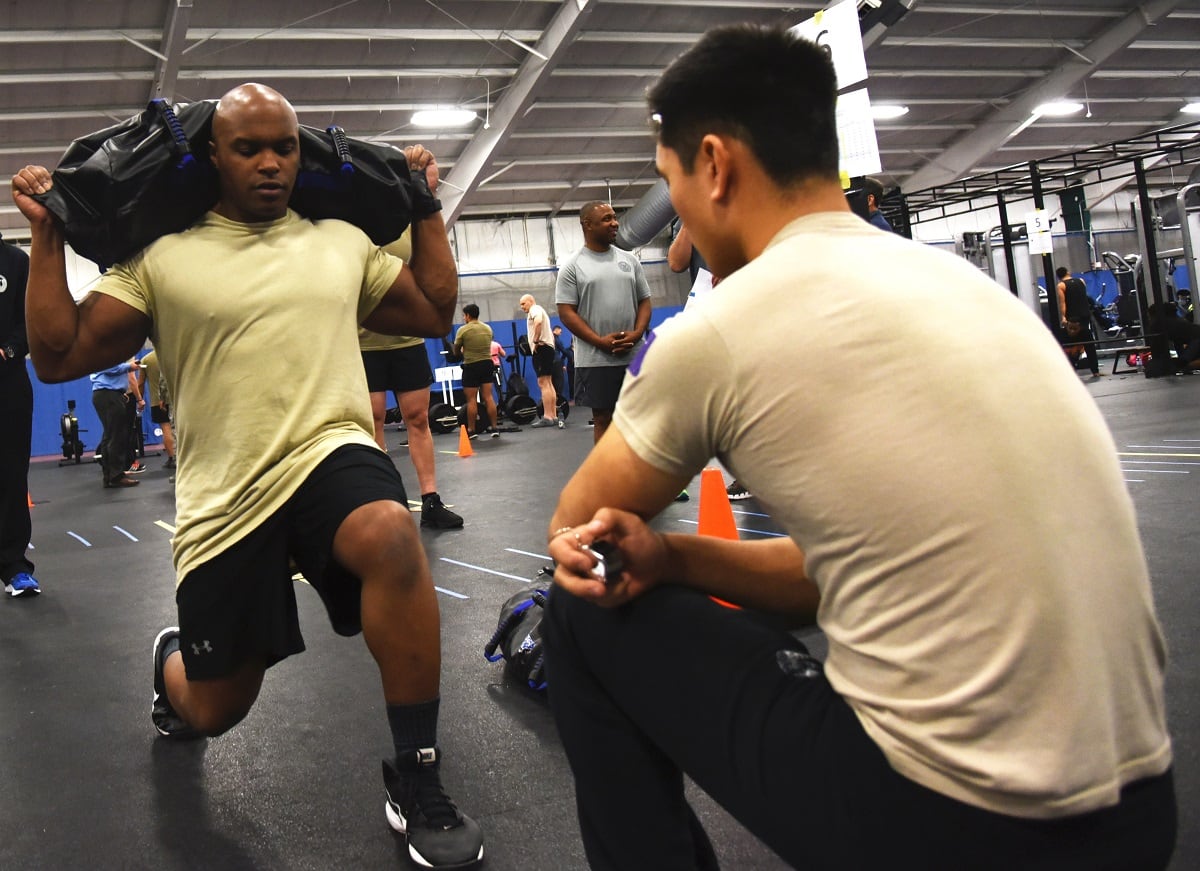
“We’ve been able to see … when we look at their physiology, they’re jamming,” Wilson said. “They’re right where they need to be, everything’s telling us their body is right. The Omegawave tells on you. It’s insane the amount of information you get from that four minute” scan.
The data could also show if someone’s nervous system is in a sympathetic state — also known as the “fight or flight” response — which could tell the human performance technicians that the trainee needs to spend some time in a float tank, and bring his nervous system down to a relaxed, parasympathetic state.
And the data could also show if a trainee is in too much of a parasympathetic state, Wilson said, which would mean time in a float tank is the last thing he needs. That trainee could instead need to spend 15 minutes in contrasting hot and cold baths to stimulate him, Wilson said.
Barefoot in the grass
Wilson also said something as simple — and unexpected — as walking barefoot on the grass can do the trick to reset a trainee and get them ready to reach new heights in their next workout.
“Special forces guys, they do it,” Wilson said of relaxation exercises such as walking on grass. “You can’t imagine the stuff that they’re doing down there that everybody would probably laugh, but it’s moving the ball. Call it a combat walk, or warrior walk, or something like that, at the end of the day … walking barefoot on the beach has a huge influence.”
By pushing trainees’ central nervous systems into new autonomic states, they’re being prepared for the intense challenges that await them in their next phase: the grueling initial entry course.
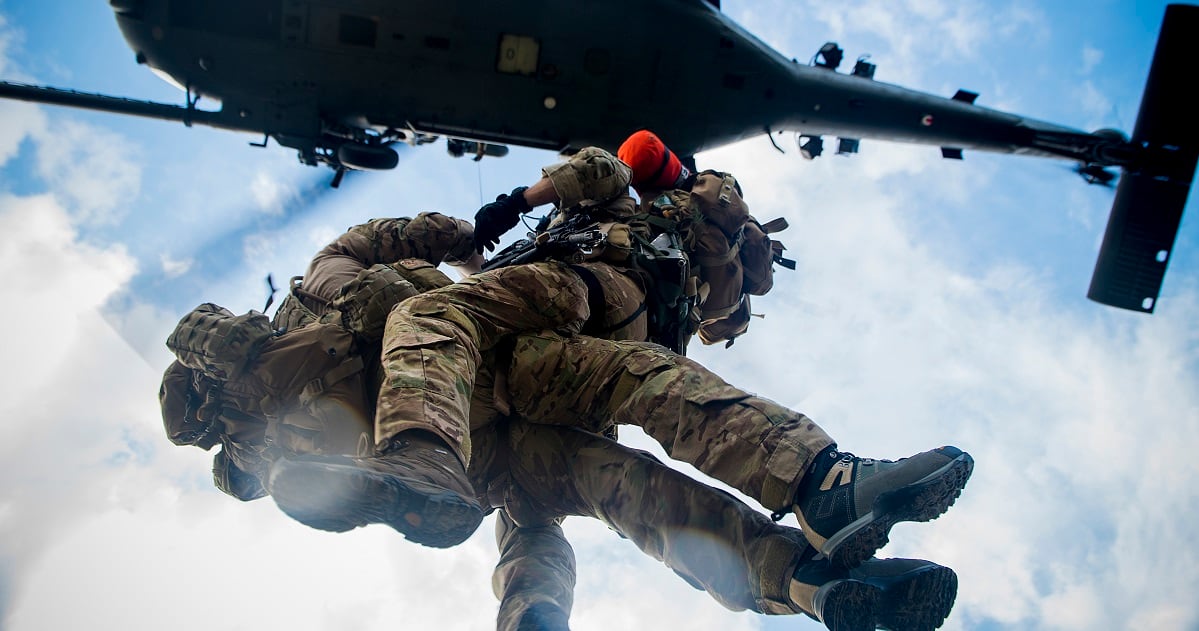
And by focusing so intensely on the condition of the minds and bodies of special warfare trainee and airmen, Wilson hopes the Air Force will be able to lengthen their careers. It takes too much time and effort to train up special warfare airmen, only to have them burn out and break down after five years or so, Wilson said. The Air Force needs to get entire careers out of special warfare airmen — and take care of them the way maintenance wings take care of their fighters and bombers.
“They call them athletes? They’re weapons systems,” Wilson said. “At the end of the day, it’s no different than airplanes. There’s a reason why you go through phase inspections, there’s a reason why an airplane comes off the line, you do certain maintenance at certain times. This stuff is actually now starting to treat humans like the weapon system that we fly in the air.”
The facilities also have two sensory deprivation tanks, in which students can float for a half-hour or hour and bring their bodies back down to a destressed state much more quickly than the old method of recovering in hot and cold baths, which could sometimes take days.
“The less stress the students are under, the more training they’re able to take in,” Schindler said.
Matson said that by floating weightless in the tanks, students with injuries such as lower back pain can rest without putting pressure on body parts that hurt, facilitating the healing process.
Those tanks are opened up to injured students during the training day, and after hours, non-injured students who feel worn down can sign up to spend time in it, Matson said. Instructors at the prep course, who themselves are operators and are often “pretty beat up as well,” Matson said, can also recuperate in there.
Matson said that she sometimes suggests trainees spend time in the float tanks after particularly intense Friday ruck marches, or extended training days. She said that the rucks had been particularly hard for the handful of female trainees who have attempted the prep course.
And what is happening at the 350th could possibly be replicated at other training units shaping non-special warfare airmen.
AETC spokeswoman Marilyn Holliday said in an email that the human performance support techniques being crafted by the Special Warfare Training Wing could be used as a model to shape training, injury prevention and recovery of other airmen in the future.
And, Holliday said, the biometric feedback being collected on special warfare trainees is helping provide data on training in high-stress environments. This will help show AETC ways that it can train airmen better, throughout the command, she said.
Stephen Losey is the air warfare reporter for Defense News. He previously covered leadership and personnel issues at Air Force Times, and the Pentagon, special operations and air warfare at Military.com. He has traveled to the Middle East to cover U.S. Air Force operations.




